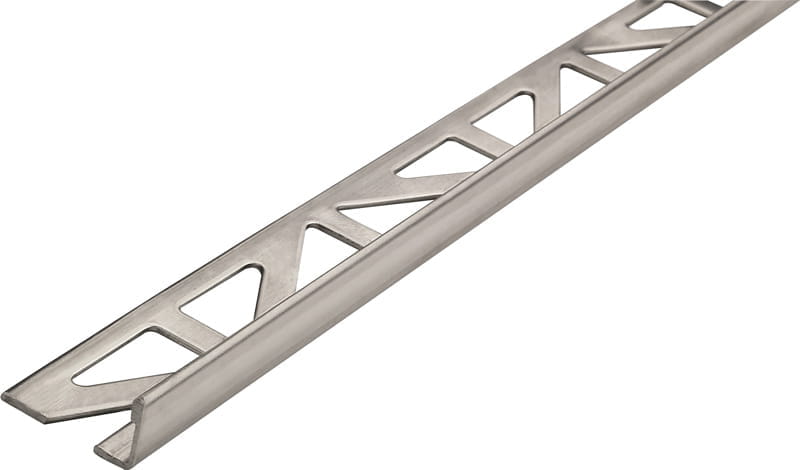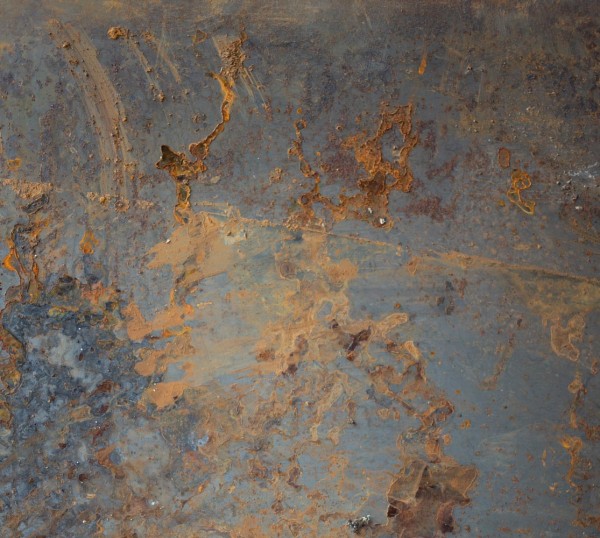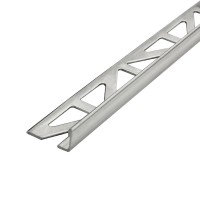Nowadays, stainless steel is a very popular material, which is readily used in various areas in the house. The stainless steel profile is popular because it is not only robust and durable, but also as a decorative element to enhance your space.
Stainless steel is always considered corrosion resistant, but this property is not automatically given. The material may well rust if the particular stainless steel was not selected to suit the intended use or the subsequent processing was not carried out properly. It is therefore particularly important to deal with the subject of "stainless steel processing" beforehand, so that you are not surprised at the end when the tile profile is covered with brown speckles.
But don't worry, the brown speckles don't have to be rust directly. They can also be flash rust.
Flash rust
What is it?
Flash rust is the so-called little brother of rust. Unlike real rust, it is considered relatively harmless because it affects the surface coating and has not yet eaten into the paint and metal.
How does flash rust develop?
Flash rust occurs when metal particles settle on stainless steel parts. This can happen during incorrect storage (stainless steel next to black steel) or during flex work on the construction site due to flying sparks. These metal particles, which are transferred by air or water, settle in depressions, edges and notches. This causes the metal particles to start rusting, but not the stainless steel itself. However, if care is not taken to remove the flash rust, the passive layer cannot form and the stainless steel begins to rust. Therefore, a thorough, regular cleaning of the tile profile is necessary.
How do I recognize flash rust?
As described above, flash rust is caused by fine iron particles / flying sparks that settle on the paint and corrode over time (especially in damp areas). In contrast to real rust, with flash rust you just see brown spots, without bulging or other deformation of the surface.
Stainless steel can rust under certain conditions and incorrect applications or during installation (processing).
Here are some reasons:
- Stainless steel must not come into contact with normal steel (black steel). In this case, steel dust can cause a spill on the surface, resulting in the so-called flash rust.
- Also, when processing and laying tile profiles, steel and dust-free tools (e.g. flex disc) must be used. Meanwhile, there is a wide range of flex discs. Among others, extra thin discs for stainless steel rails, which prevent the rail from glowing during cutting (flexing).
- Often, stainless steel rails are machined with a flex disc that was previously used for cutting mild steel or unalloyed steel. The flying sparks can damage the surface and cause a pitting corrosion or later a surface corrosion.
- Chemical products or alkalis (acidic) contained in cement haze remover or in mortar, grout and silicone can also be harmful.
- If the rails are not cleaned immediately after installation with a clean linen cloth and the remains of adhesive, silicone, etc. are removed, rust can also develop.
- Condensation caused by insufficient ventilation can also cause the tile profiles to start rusting.
Can I remove flash rust?
 V4A stainless steel robust against rust
V4A stainless steel robust against rustYes, you can definitely try it. In most cases, the flash rust can also be removed. With special stainless steel cleaners or a special stainless steel paste for V2A stainless steel, a good result can be achieved. Either use a clean polishing cloth or fine sandpaper to remove the brown spots. In harder cases, if necessary, you can also try to polish the spots away using a buffing attachment (drill) and then preserve them with stainless steel care spray.
Please test on a small area first to see if the desired result occurs.
How can I avoid flash rust?
Flash rust does not just happen. We have listed the reasons above. Clean your tile profile after installation, ventilate well and pay attention to the exact area of use. Will it be exposed to high loads? Then we recommend the DURAL angle profile made of V4A stainless steel. Tile rails made of V4A stainless steel have, for example, better corrosion protection or are more resistant to all (chemical) influences than profiles made of V2A stainless steel.
Notes:
In general, the generally accepted rules of technology must be observed!
The following applies to all products/materials: The usability with regard to mechanical and chemical loads must be carefully checked in each individual case before installation. Protect material from prolonged exposure to sunlight.
If you have any questions, please do not hesitate to contact us.
We wish you success
the team of alleszumfliesen.de



